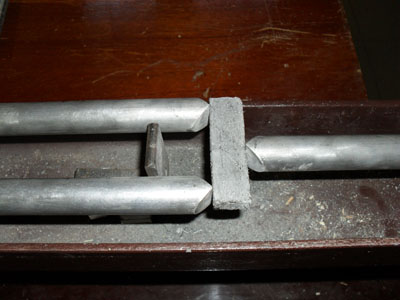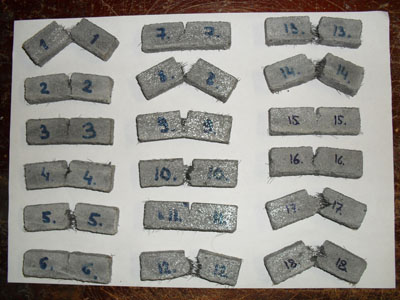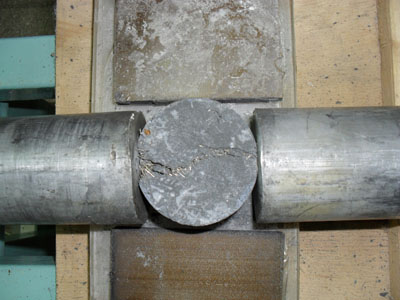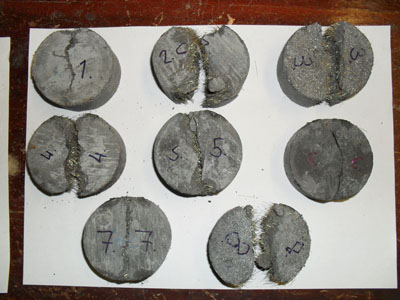Deformation and fracture of CARDIFRC under impact loading
This project was carried out jointly with
Research Group - Theoretical, Applied and Computational Mechanics (Cardiff University, Great Britain) and
Laboratory of Mechanics of Materials (Research Institute of Mechanics, N.I. Lobachevsky State University of Nizhni Novgorod, Russia)
The study of the high performance fibre reinforced concrete, CARDIFRC, in dynamic compression, splitting and notched three-point bending were conducted. CARDIFRC was developed and produced in Cardiff University. In contrast to ordinary concrete, this fibre reinforced concrete is much stronger in compression, tension and shear, has much higher impact and fatigue resistance, higher toughness, frost resistance, thermal and fire resistance. The study of dynamic mechanical properties of this material was performed using the Kolsky method and its modifications for dynamic splitting (Brazilian test) and notched three-point bend testing. Experiments and data processing were carried out jointly with Research Institute of Mechanics in Nizhni Novgorod. It was shown that the temporal dependence of strength for CARDIFRC in compression and splitting, as well as the specific dynamic fracture energy can be effectively predicted by the incubation time fracture criterion. Temporal dependences of strength characteristics of CARDIFRC predicted on the basis of structural-temporal approach developed at the RCD turned out to be in very good agreement with the experiment. More detals concerning structural-temporal approach to predict the behavior of large concrete structures can be found here -
PDF1 ,
PDF2.

Dynamic compressive strength of CARDIFRC obtained in experiments (open squares) and predicted by the incubation time criterion.
| 
The dynamic split strength of CARDIFRC; experimental values (open squares), predictions of the incubation time criterion. The dashed line shows the predicted strength of granite for comparison. (solid line)
|







